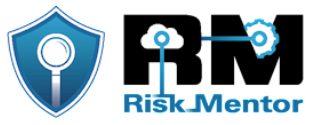
Working at Height
A graphic visualisation of the Control Framework in a format that presents the:
- Required Operating States in a short format - and then provides an overview (in the right-hand panel) of the detailed description developed for GZn
- Failure Modes in a summary format. Each of the Required operating states is (in detail) impacted by a number of credible failure modes. The summary information for these is described by clicking on each of the second-order bubbles, and finally
- Credible failure mode detail is provided in the text block on the right when a bubble is selected
- Business Inputs which address these failure modes appear as a list on the right-hand side panel of the graphic, with the higher frequency and more significant activities presented in the Important section
Feedback on this analysis is welcomed, and as it is generated dynamically ongoing changes will be made to this presentation as new incidents and emerging technologies inform the failure modes and business inputs presented.
Recently updated
BI-EPH.27.10 Temporary platforms (scaffold) constructed and maintained for stability and usability

Expectation: Temporary structures to allow for access to elevated locations are rated, constructed to suit requirements, and regularly inspected and maintained to maintain stability and usability.
Specify: Temporary structures are deployed to provide access to elevated location. Specific requirements for these structures includes:
- Specifying, sourcing and confirming that items on site are approved and rated scaffolding components - that have appropriate conformance and test certificates and decals - with anti-slip - flooring, step treads, and ladder rungs
- Specific scaffolding skills for construction and use are included in training and assessment packages - reinforcing requirements for stability, safe access (stairs and off set ladders installed at 1:4 (H:V = 75o)), anchor points (e.g. extension posts), edge protection, securing to fixed structures, etc.
- Tasks at elevated positions, that could not be engineered out or accessed by fixed or elevating work platforms have a requirement for scaffold to be constructed
- Scaffolding checks are included in documented requirements for work area inspections
BI-SDH.91.20 Pre-planning for work at heights tasks

Expectation: Work at heights requirements are considered during the planning phase and appropriate measures (equipment and worker selection, procedures and documents) are developed for implementation.
Specify: Planning and design activities are implemented to identify if work programmes, deployed equipment and/or contracted works will require work from elevated positions. This process includes:
- Engineering review to remove the requirement for any hazardous tasks (work at height outside engineered platforms) identifying how tasks could be performed at ground level or on a permanent fixed platform with no reaching required
- Detailed planning and work area inspections (with associated identification of: external requirements to be addressed; rated anchor points (including static lines); documentation, and; gathering of drawings and photographs) prior to review by a group of appropriate subject matter experts (planning, supervision and operational) [=Risk Assessment/Analysis process] for WaH tasks that could not be engineered out
- Preparation of safe work method statements, procedures, draft Job Safety Analyses (JSA) or similar to support work crews preparing work authority (and permit) materials. These specify requirements for anchors/static lines, edge protection, catch netting, relocating EWP's/ladders to avoid over reaching, barricading and signage, restricting entry points, and emergency response considerations - it also identifies prohibited items (such as portable extension ladders and non-standard/out-of-code(date) lanyards, anchors, and harnesses) to communicate with contractors and other workers on
- Formally commission works in line with a permit to work process that confirms all requirements are passed on and understood by workers conducting the tasks